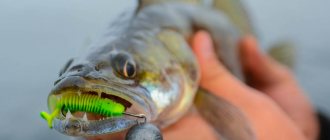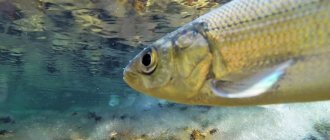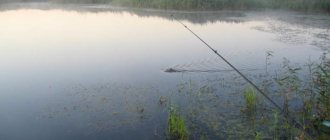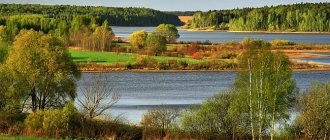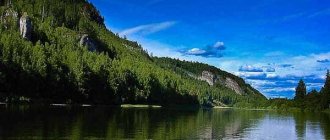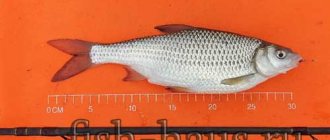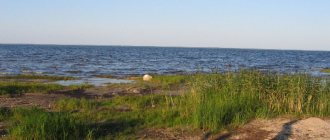Hunting for Kama pike perch
For centuries, the Kama has been and remains, to this day, a great fishing river. Once upon a time, many tribes fed on the waters of the Kama, which abounded in numerous fish. And although times have long changed and the waters of modern rivers are not as rich in fish as they once were, the Kama still attracts many fishermen today. And there are still a lot of fish there. And if in the lower reaches of the Kama and its middle reaches there are fewer fish, then the upper reaches of the Kama are distinguished by fish abundance and diversity of species, and there it is quite possible to experiment with a variety of tackles and rigs.
The technique and tactics of catching both predatory and peaceful fish are based on the peculiarities of its mode of existence and behavior. Fishing for pike perch on the Kama River is no exception to this rule. However, before you go to this river for pike perch, you should familiarize yourself with the habitat and feeding habits of this predator. After all, these aspects are important for the selection of equipment.
The pike perch's mouth is designed in such a way that during the feeding process, the pike perch is mainly capable of swallowing rather small and narrow prey. And this feature must be taken into account when choosing artificial baits and natural baits. For example, if you are catching pike perch using live bait, then crucian carp is not suitable for this purpose, since it has a wide body, which is simply inconvenient for pike perch to swallow. Wide spoons and wobblers are also not suitable for catching pike perch with artificial bait.
Fishing for pike perch in the upper reaches of the Kama in open water begins in June and can last until the end of October and even until freeze-up. Most often, the fanged predator is caught by trolling. This fishing method requires the use of an echo sounder to determine the bottom topography, depth, and location of the prey.
With the onset of autumn, trophy fishing for pike perch begins. It is during this period that the most record-breaking specimens of this predator are found. The most promising winter fishing for pike perch in the Kama River takes place at its mouth. As a rule, this fish is caught from the ice, using winter lures, balancers and jigs, and less often with girders.
In spring, the period of fishing for pike perch is fleeting and lasts approximately from mid-April to early May. As in the autumn, large pike perch are caught in the spring and anglers who manage to fish at this time are very lucky.
By the way, a very productive form of fishing for pike perch is underwater hunting for this predator, and it can last all year. Spearfishing brings together many people, and is very popular on the Kama River. Spearfishing on the Kama River for pike perch is especially popular among underwater hunters.
However, most pike perch anglers prefer to catch this predator using spinning baits. This is explained simply by the accessibility and versatility of this method of fishing. They fish on the Kama with spinning rods both from boats and from the shore. Sudach grounds on the Kama include both snags and spacious stretches.
The most common spinning baits for catching pike perch are foam rubber and silicone fish, as well as wobblers with a narrow body. Jig fishing is more suitable for beginners. Experienced fishermen often use Carolina and Texas rigs, the use of which already requires certain skills. Deep trolling for pike perch on the Kama River is becoming increasingly popular. In most cases, the fanged fish are caught using submersible wobblers, if there are conditions for this (absence of thickets of grass, snags). Most often, success is brought by long-distance retrieves in the water column.
Where there are areas with calm currents and depths of more than three meters, pike perch are caught from a boat using onboard fishing rods. To make catching a predator successful, anglers try to fish in sections of the river that are well known to them. And usually in many cases they are caught using natural bait, small-bodied fish or pieces of fish meat. Night fishing is also popular on Kama. In most cases, during night fishing, pike perch are caught using long casts.
Where to look for pike perch on the Kama?
Before casting your tackle, you need to decide where it is best to start catching fangs. And for this you need to know and take into account the preferences of this predator. You should know that pike perch like spacious areas with well-heated water. Also very promising on the Kama are areas where there is a complex bottom topography.
The pike perch searches for such areas for the reason that the weak current carries a large amount of food to the pike perch’s sites; in addition, at depths, as a rule, the oxygen regime is the most optimal. When hot summer days arrive, pike perch prefers to stay in the area of sand bars and rifts. And with the onset of cold weather, pike perch concentrate near channel dumps and dams, at the exits of channel holes, where the current is moderate.
It is where there is a gentle current, great depth and varied bottom topography that the most successful pike perch fishing on the Kama occurs. And only at night does pike perch leave channel holes and other deep places and go to shallow depths. As a rule, at night pike perch prefers to feed in the coastal zone.
Winter fishing for pike perch on the Kama has its own difficulties and features. In winter, pike perch feeds much less frequently and its activity decreases. Therefore, during winter fishing, it is very important for the fisherman to determine where the flock of pike perch is currently located. You also have to manage not to give such a place away to competitors, and choose the right bait that will interest the fanged predator and force it to become more active. The task of confessing is not an easy one.
Of course, those anglers who know the pike perch sites well almost always occupy an advantageous position, unlike inexperienced anglers and beginners. To effectively search for a promising place, you should choose a distant point on the river and then start fishing for a promising place, adhering to one direction.
If a place where pike perch is concentrated is discovered, it is recommended to start fishing in the opposite direction from the selected point. In the lower reaches of the Kama there are places where sedentary pike perch live, and therefore there is always a high chance of finding a predator’s camp.
Often, catching pike perch on the Kama from a boat is done using the “swimming” method. It is very important here that the boat moves with the current and there is no headwind. In addition, ideally, the craft should be equipped with an echo sounder to determine where pike perch are concentrated. This will save a lot of time. Sometimes the boat is turned across the current and drifts along the edge of the river. The boat's course is adjusted using oars, fishing not only coastal areas, but also more distant promising areas.
The fanged one does not stay in one place for long. The huge space of the Kama gives the predator the opportunity to look for food in a variety of places. Here, the main task of the fisherman is to find a fish site, taking into account factors such as weather, current strength, depth and season change. And depending on them, select the right bait for catching pike perch.
Happy fishing!!
fishers.spb.ru
Winter fishing for pike perch: Secrets of catching pike perch in winter
To make winter fishing for pike perch a success, you need to know some of the behavioral features of this predatory fish. When going winter fishing for pike perch, remember that pike perch prefer a hard sandy or gravel bottom. Especially when it comes to winter fishing for pike perch. However, we should not forget that the location of river, lake or reservoir pike perch will have its differences. I had to catch pike perch in winter in such reservoirs as Mozhaiskoye, Ruzskoye, Ozerninskoye, Rybinskoye and a number of others.
To make winter fishing for pike perch a success, you need to know some of the behavioral features of this predatory fish.
Where to catch pike perch in winter
Pike perch is classified as a twilight and nocturnal fish. At the same time, he often switches to a daytime lifestyle. Another unusual feature of this predator is that, being a bottom-dwelling fish, it quite often hunts in the water column or near the surface, especially during collective attacks on concentrations of bleaks. Like all perch, pike perch is a schooling fish, preferring a collective method of hunting for fry. True, this applies mostly to small and medium-sized predators. Large individuals often prefer proud loneliness. Of course, except during spawning and in the pre-spawning period, when the male and female hunt forage fish together.
When going winter fishing for pike perch, remember that pike perch prefer a hard sandy or gravel bottom. Especially when it comes to winter fishing for pike perch. However, we should not forget that the location of river, lake or reservoir pike perch will have its differences. I had to catch pike perch in winter in such reservoirs as Mozhaiskoye, Ruzskoye, Ozerninskoye, Rybinskoye and a number of others. I know typical pike perch places on these reservoirs. Usually these are sandy or rocky slopes in depth and there must be underwater snags, fallen and flooded trees, as well as other shelters.
Winter fishing for pike perch at depth
Do not forget that in winter, forage fish try to stay in deep water, where the temperature in the bottom layers is the highest - approximately 4C. Here you should also look for pike perch, then your winter fishing for pike perch will be unforgettable. At the same time, fattening pike perch can go out to water, where the depth is 4–5 m. Therefore, the concept of “pike perch camp” is quite loose. During the day, winter pike perch can rest in cluttered holes or along the “banks” of old flooded channels, and at dusk and at night they go out to hunt for small fish in the coastal zone. On rivers, winter pike perch prefers to stay near the piles of bridges and breakwaters, along rocky or sandy spits. So winter fishing for pike perch is active search fishing.
The influence of weather on winter fishing for pike perch
It is easier to catch pike perch in February when the weather is clear and frosty. In this way, winter pike perch is akin to perch. Although sometimes it takes well in cloudy weather with snowfall and zero or positive air temperature. It all depends on his daily diet. In winter, metabolism in the body of fish occurs more slowly than in other seasons. Pike perch is no exception in this regard. However, let's not forget that this predator is by no means thermophilic.
The statement that winter fishing for pike perch is more successful if you catch pike perch in the morning and evening dawns is generally true. However, outbreaks of zhor often occur during the day. Why? The fact is that under the ice, especially in the middle of winter, pike perch leads a rather sedentary lifestyle, spends little energy, and after another outbreak of hunger, it may not respond to food for several days, ignoring the most tempting proven baits. But now the digestion process is completed, and the school of pike perch becomes active again. And the bite begins regardless of the time of day. If you get there, it’s your luck! Consider this winter fishing for pike perch a gift from fate!
Collecting tackle
Before catching pike perch with a jig, you need to assemble the equipment, and you should take into account where the fishing will be carried out and some features of the reservoir.
Rod
The spinning rod must have a medium-fast action, but the length and test load will differ according to the following criteria:
- If fishing is carried out from the shore, then select a longer rod; 2.4-2.7 m will be quite enough. Fishing a reservoir from a watercraft can also be done with shorter rods, maximum 2 m; longer forms are not entirely convenient to use.
- The casting indicator is also important; if there is an overload, the likelihood of the rod breaking increases, and light baits will not be able to be cast to the right place.
When selecting a rod, they usually give preference to dough from 7-10 g to 30-40 g; this range will be ideal for both heavy jigs and for spinners and wobblers.
Coil
You shouldn’t be fooled by fashion trends and choose cartoons that are more suitable for heavy loads. For jig equipment, a regular spinning reel with a 2000-3000 spool is quite sufficient. It is important that it has a sufficient number of bearings and is in good working order; at the most crucial moment during fishing, this will be necessary.
Lines and cords
On the advice of experienced fishermen, it is best to use a line as a base when fishing for pike perch with a jig. This is due to the fact that the braid with a smaller diameter can withstand a greater load, and accordingly the equipment will be thinner. The ideal option would be 0.14-0.16 mm thick.
The use of fishing line is also allowed, this will reduce the cost of the assembled tackle. For fishing, 0.26-0.30 mm thick will be enough.
When choosing a fishing line or cord for catching pike perch, you should give preference to colored options, bright orange, bright lime green, pink. This will help you see the bite and catch it on time.
Accessories
In addition to the main components, special attention is paid to connecting details; they must be of excellent quality, because after hooking, the pike perch can offer strong resistance. Clasps, swivels, and winding rings must withstand all attempts to break free and help keep the trophy on the hook.
Hooks for jig fishing
I form the tackle, each fisherman independently determines which hook to put under the selected silicone. Recently, offset hook options have become popular, which, when casting, significantly reduce the likelihood of snags in snags and grass. They also navigate perfectly on a clean bottom, and the ability to replace the load puts them in the lead.
Fans of the classics do not stop using the jig head, and this installation is also very popular among both experienced fishermen and beginners.
It is worth remembering that pike perch prefers to be located on the bottom in all weather conditions, so jig weights must have sufficient weight. Jigs are also used in shallow water; smaller loads are used here.
Victoria Leshchenko
I've been working hard in the fishing tackle department for the past six years. I can help you assemble almost any gear.
Ask a Question
In addition to single hooks, silicone is equipped with double hooks; removable Cheburashka weights of different weights are used as a sinker for them. Additionally, large sizes of silicone can be equipped with tees; they are attached to the fish through the winding ring from below, closer to the tail.
Sinkers
Heavy weights are used for rigging; this is done in order to bring the cast bait as close as possible to the bottom. Depending on the depth of the reservoir, from 10 g to 28 g jig heads or collapsible Cheburashkas are used.
The main components of the gear are listed, but this is not enough to catch pike perch. The fanged one will not react to a bare hook; to lure it you need to choose the right bait.
Fishing for pike perch on the Kama
Pike perch is a fish that is hunted everywhere.
The Kama River is considered one of such places. Here, of course, there are other types of fish: bream, perch, bream, pike. But today we are talking about catching pike perch. It can be caught almost all year round. The exception is the ban on fishing during spawning. Fishing spots
This is, first of all, the mouth of the Kama River, Nizhnekamsk. Good results were shown in the area of the village of Krasny Luch, near Chistopol, Staraya Maina, and also a catchable place was discovered near the Laishevsky district.
Summer. Fishing. Jig. Trolling
Pike perch is caught well in the summer, from June to early August. On the Kama, fishing for pike perch by trolling is practiced. This helps to determine its parking spots and quickly fish large areas of water. To do this, in addition to a boat, spinning rods, and various wobblers, you need to stock up on an echo sounder to determine where the fish are, the depths and the bottom topography. Nowadays it is an indispensable assistant. But the classic method for catching pike perch was and is the vertical method. Plunge fishing is an exciting activity. Suitable gear: a hard short (up to 1.5 m) spinning rod for clearly hooking fish, an inertial reel and bait in the form of foam fish or silicone fish of different colors and sizes. Many amateur fishermen practice live bait fishing. Main fishing spots: edges, dumps, holes, flooded trees, snags.
Autumn. Fishing Features
A distinctive feature of this period of fishing is that the predator becomes more aggressive and the feeding begins. Actively feeds and gradually approaches winter mooring sites. At this time you can catch a trophy fish.
Winter
Pike perch is one of the main fisherman's trophies in winter. The mouth of the Kama River is considered a catching place. On the river, fish are caught both on the first ice and when the ice thickness is more than 20 cm. At this time, a large group of winter fishing enthusiasts, some on foot, and many directly in cars, pour out onto the ice - actively searching for fishing spots. On the Kama, pike perch are caught in winter using live bait, jigs, winter lures or a balance beam.
Spring
In the spring, this representative of the fauna is successfully caught between April 15 and May 10. At this time, the pike perch is at its most hungry! But getting to this feast is not so easy. A very short period of time, such happiness. A week, a week and a half, no more. You need to constantly monitor the situation if you want to get a decent copy.
All year round. Spearfishing
Underwater hunters stand as a separate proud detachment against the general background of the numerous fishing fraternity! Only they look the predator “in the eyes” and fight with him one on one.
Speaking of underwater hunters, let's say that a holiday has come on their street too! The first recreation centers appeared with a focus and provision of specific services to this detachment of the fishing fraternity. For example, the recreation center "Dubki" - Republic of Tatarstan, Nizhnekamsk district, the village of Krasny Klyuch, as well as the recreation center "Kamskie Prostori" here in the Laishevsky district. Here we are always happy to help you with equipment and advice from professional fishermen. They will provide comfortable rooms, and in winter - a bathhouse!
More detailed information can be found here. Come, relax, catch, take pictures with your trophies. And of course, come to Kama again!
www.fishlovlya.ru
Technique for catching pike perch with a jig
To begin with, you should throw the gear into an expected, promising place, which may be located at a considerable distance from the shore. When fishing from a boat, this is not so important, since you can get very close to a promising place.
- The rod is held with the tip up or to the side and you need to monitor its reaction. As soon as the tip tension disappears, the bait has fallen to the bottom.
- The jig fishing technique involves step-by-step retrieving. It consists in the fact that with 2-3 turns of the reel the bait comes off the bottom, after which there is a pause of 2-3 seconds. At this moment, the bait sinks to the bottom, raising a cloud of turbidity, which undoubtedly attracts a predator.
- Pike perch can attack the bait both during the retrieve and during a pause, when the bait smoothly sinks to the bottom.
- While retrieving, you need to keep an eye on the tip of the rod, which signals a bite. At this moment you should make an active hook. The pike perch has a powerful mouth and if the hook does not catch, the pike perch will simply get rid of the bait.
- Fishing is a very important stage in the fishing process. If a large specimen is caught on a hook, you will have to be patient and use all your experience, as well as the functionality of the gear.
- If you bring the pike perch to the surface of the water and give it a chance to take a breath of air, then you can pick up the pike perch without any problems with your bare hands.
Fishing on the Kama
The Kama is the most important water artery of the western Urals. From ancient times until today, the river has been famous for its amazing fishing.
Significant depths, shallows, riffles with a jet current, which seduce many species of fish, cannot but attract beginners and experienced fishing masters. There is an opinion that fishing here is unearthly bliss. Fishing brings a decent catch, but only for those who are rightfully considered professionals in the fishing business. And for this it is desirable to have some experience, knowledge of the basics of fish behavior and skills in basic fishing methods. About 50 species of fish live in Kama, most of which are commercial.
Fishing on the rifts
Riffles are the most catchy places on the river. Most often you can catch pike, perch and chub with them. Often the trophy turns out to be a catfish. The presence of predators in shallow areas of the river is explained by the large number of small fish. Catching predators in such places with a spinning rod is an incredibly interesting and exciting pastime. After freeze-up and the water level returns to normal, you can start trying to fish on the rifts. The most successful fishing is possible from the beginning of May. In summer, when the weather is hot, the riffles usually become shallow. But if there are schools of fry there, the appearance of a predator is inevitable. Pike and chub, “sparkled” on the rifts, delight with their impressive sizes. The most worthy specimens can be caught in the dark.
If the perch is biting decently, you don’t have to worry about spooking it. On the contrary, rising turbidity provokes the striped humpback whale to take active action.
When fishing on the Kama in such shallow water areas, you should not rush, and first you need to fish the drop from the middle of the main stream, just above the riffle.
Most often, bites occur when fishing the area between the streams. If the bite is not strong, it is recommended to replace the spoon with a smaller one. A particularly sharp bite occurs when the spoon appears unexpectedly for the predator. In a flowing stream of water, any bait quickly appears and disappears instantly. The predator has no choice but to attack the bait instantly.
- Fishing on the Kama
- Fishing on the Kama
- Fishing on the Kama
Catching zander and pike on the Kama
Warm weather in summer causes white fish to migrate from the Kama to small rivers. In search of food, pike and pike perch follow it. In summer, it is in small rivers, when the water in the Kama is warm, that fishing for predators with a spinning rod is promising. Rafting fishing is more convenient. When rafting, the length of which is usually in the range from 5 to 10 km, snags, rubble and overgrown banks are caught.
Fishing on the Kama
Foam rubber bait with a “Cheburashka” weight is used as bait. The weight is selected so that the lowering of the bait is slow. Its weight is small and it is almost impossible to cast it from the shore, which is why they use raft fishing. It is better to move the bait in steps, then raising it, then lowering it.
Local fishermen believe that fishing for pike on the Kama using foam fish is quite successful and the lion's share of pike caught in early autumn is with this gear.
With the improvement in the bite of pike perch and bersh, fishing for these fish becomes more interesting for anglers. In hot weather, pike perch and bersh prefer a wobbler. In autumn, jig is considered a more catchy bait. Quite often, pike perch are caught at shallow depths.
At this depth, a jig weighing 20-27 g is used.
The greater the depth, the greater its weight should be. Fishing for pike perch on stones can be especially catchy, although a large number of hooks can be considered a disadvantage. Because of this, catching pike perch in the rocks is difficult, but incredibly exciting.
- Fishing on the Kama
- Fishing on the Kama
- Fishing on the Kama
Winter fishing
Ice fishing for pike perch and bersh is unusually common on the Kama.
Bersh is considered, despite its smaller size, to be a more valuable trophy. This is due to the fact that bersh meat is tastier.
Most often in winter these predators are caught using lures with sprat. With a good bite, a predator may well react even to a bare hook. Most fish live at the confluence of the Kama and Volga and in the area of the Kuibyshev Reservoir. A particularly high concentration of fish is observed in places with an uneven bottom. The main task when fishing from ice on the Kama is to correctly determine a promising fishing spot. It is important to know the depth for the most successful bite. For these purposes, an echo sounder is indispensable. If there hasn’t been a single bite in half an hour, it’s better not to waste time and look for a more catchable place.
In winter in Kama you can also catch pike, catfish, and bream.
The chub is considered an excellent trophy. On the Kama, there are frequent cases of catching trophy specimens weighing up to 10 kg.
Perch fishing is promising in areas with horsetail thickets. There is an increased concentration of air under the ice, which explains the presence of perch in such places. During winter fishing on the Kama, it is not at all obvious what to do - look for a catchy place or wait for a bite in one. Kama is an excellent fishing spot. Fishing on the Kama is an unforgettable pleasure, both in the warm months and in winter from the ice.
Fishing on the Kama
www.ribakov.net
